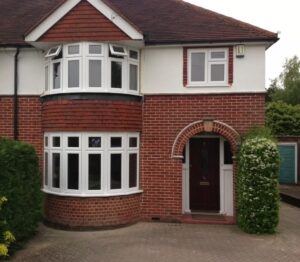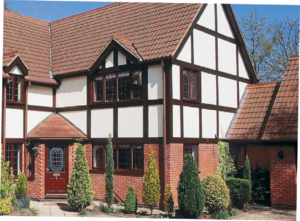
Double Glazing Installation Deals
Eine Bewertung hinzufügen FolgeÜbersicht
-
Gründungsdatum Dezember 16, 1978
-
Sektoren Trainee
-
Gepostete Jobs 0
-
Gesehen 13
Beschreibung des Unternehmens
This Is A Double Glazing Materials Success Story You’ll Never Believe

Understanding Double Glazing Materials: A Comprehensive Guide
Double glazing has actually ended up being a basic practice in modern-day construction and home renovation, largely due to its undeniable benefits in energy effectiveness, soundproofing, and general comfort. At the core of this innovation lies a variety of products, each contributing unique benefits to the double glazing phenomenon. This article checks out the different materials used in double glazing, their residential or commercial properties, pros and cons, and how they affect the overall performance of windows.
What is Double Glazing?
Double glazing is a type of insulation that involves 2 panes of glass separated by a gap, generally filled with air or inert gas. This setup serves a main purpose: to minimize heat transfer between the interior and exterior of a building. As a result, double-glazed windows help maintain warmth during winter and keep areas cooler during summer season.
Benefits of Double Glazing
- Energy Efficiency: Minimizes heat loss, decreasing energy bills.
- Sound Insulation: Reduces outside sound, improving convenience.
- Condensation Reduction: Lesser condensation indicates less danger of mold.
- Increased Security: Tougher than single-pane alternatives, providing higher protection versus burglaries.
- Boosted Property Value: Homes with double glazing are typically more appealing to purchasers.
Typical Double Glazing Materials
1. Glass Types
The effectiveness of double glazing is mainly affected by the kind of glass used. Below are the typical kinds of glass used in double glazing:
| Glass Type | Description | Benefits | Disadvantages |
|---|---|---|---|
| Drift Glass | Fundamental glass, typically used in basic applications. | Cost-effective | Less insulation compared to Low-E glass. |
| Low-Emissivity (Low-E) | Glass covered with a thin metal layer to show heat. | Outstanding insulation, protects natural light. | Higher initial cost. |
| Tempered Glass | Heat-treated glass that is stronger and safer. | More resilient, resistant to effect. | Can be more costly due to processing. |
| Laminated Glass | Glass layers bonded with a plastic interlayer. | Deals security and UV protection. | Heavier and more costly choices. |
2. Spacer Bars
Spacer bars are the products that separate the two panes of glass in a double-glazed system. Numerous materials can be utilized for this purpose:
| Spacer Bar Material | Description | Advantages | Disadvantages |
|---|---|---|---|
| Aluminium | Lightweight and rigid however conductive. | Long lasting and affordable. | Can result in condensation due to heat transfer. |
| PVC-U | A plastic option, less conductive compared to aluminum. | Excellent thermal performance. | May not be as durable as aluminum. |
| Warm Edge Technology | Typically includes a composite material. | Lowers thermal bridging, enhancing efficiency. | Generally more expensive. |
3. Gas Fills
The space between the panes of glass can be filled with air or specific gases to improve insulation.
| Gas Type | Description | Benefits | Drawbacks |
|---|---|---|---|
| Air | Routine air with no unique homes. | Affordable and enough for lots of applications. | Lower insulation than gas-filled systems. |
| Argon | Inert gas that is denser than air. | Outstanding thermal insulation. | More pricey than air however typically justified. |
| Krypton | Heavier and more efficient than argon. | Best insulation of the gas alternatives. | Much greater cost and requires specialized techniques. |
Aspects Influencing the Choice of Double Glazing Materials
When picking products for double glazing, numerous factors need to be taken into account:
- Climate: The local environment has a substantial effect on energy efficiency, determining the need for specific glass types or gas fills.
- Budget plan: Initial costs may exceed long-term advantages. Property owners must balance upfront expenses with prospective savings.
- Aesthetic Preference: Different frames and glass types offer a series of visual designs that ought to complement the architecture of the home.
- Building Regulations: Local structure codes might dictate specific materials, necessitating adherence to these standards.
Upkeep of Double Glazed Units
Beyond the installation of double glazing units, routine upkeep is essential for longevity and efficiency. Here are a couple of upkeep suggestions:
- Regular Cleaning: Use suitable cleaners for both glass and frames to prevent accumulation of dirt and grime.
- Examine Seals: Periodically check window seals for damage or wear, as jeopardized seals can drastically reduce insulation efficiency.
- Condensation Control: Monitor for condensation between panes, which may suggest seal failure and demand repair work.
Often Asked Questions (FAQs)
Q: How long do double-glazed windows last?
A: Typically, double-glazed windows can last anywhere from 20 to 35 years, depending upon the quality of materials and setup.
Q: Can I change simply one pane of a double-glazed unit?
A: It is normally advised to change the entire double-glazed system for optimum performance, as changing only one pane can lead to mismatching insulation homes.
Q: Are double glazing Installation Rates-glazed systems more expensive than single glazing?
A: Yes, double-glazed units usually have a greater in advance expense due to sophisticated products and construction, but they typically pay for themselves through energy cost savings.
Q: Will double glazing minimize noise pollution?
A: Yes, double-glazing efficiently decreases outside sound, making your living environment more peaceful.
Selecting the ideal materials for double glazing is an important action in boosting energy efficiency, sound insulation, and the total convenience of a home. With different glass types, spacer bars, and gas fills offered in the market, comprehending these elements can considerably affect performance. Property owners need to consider their unique needs, preferences, and local factors to attain the best arise from their investment in double glazing innovation. Abiding by upkeep practices and remaining informed about advancements in glazing products will make sure long-lasting benefits from this useful and vital feature of modern-day architecture.


